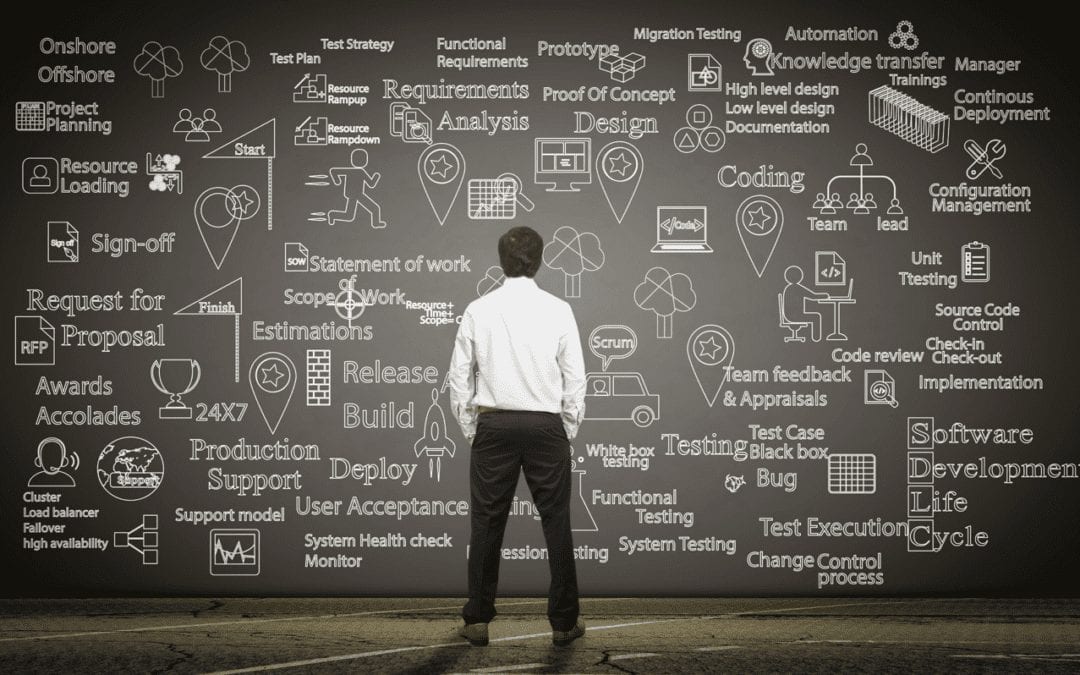EXPERIENCE ENCANVAS IN 60-MINUTES!
We're always happy to walk you through Encanvas no matter where you are in the world.

Change Management Software is a category of application software used to facilitate enterprise change and improvement. It helps organizations to adapt to change by anticipating needs, modifying or displacing incumbent software applications. In the context of application software development, change management involves tracking and managing changes to artifacts, such as code and requirements as part of software development life-cycle (SDLC).
Enterprise software created for Systems of Record use cases – such as Financial, Manufacturing Resource Planning, Human Capital Management, and Customer Relationship Management software – is designed to impose best practice approaches to commonly performed business-critical processes within the enterprise. It is unusual for Systems-of-Record applications to deliver a competitive advantage because they fundamentally install common blueprints and ways of working that all competitors in a market end up supporting. In contrast, change management software exists to stay in-tune with enterprise needs for information processing as business models evolve over time.
The digital age has seen a dramatic increase in the pace of change in business model designs. Whereas firms a decade ago wouldn’t change their business model more than once in a decade, today, organizations will review business model designs at least once every two years, if not more.
Change Management Software equips individuals or departments charged with business improvement – and command over the change management process within an enterprise – with the necessary tools to evolve information systems and to support the change process itself. It brings the following benefits to adopting businesses:
Since 2007, the enterprise computing industry has been progressively leveraging cloud computing technologies to make applications more accessible and available to user communities. The use of cloud hosting applications has made it possible for applications to serve markets and users 24 hours a day, 7 days a week. One of the challenges of porting applications to the cloud has been the risk of data loss. Data security has become an increasing concern to organizations because of their greater reliance on data to continue business operations. Additionally, the increased compliance risks of processing personally identifiable information (PII) have made organizations more concerned about the security risks of cloud-deployed applications. Nevertheless, most application platforms today are deployed on cloud computing platforms as an applications-Platform-as-a-Service ([aPaaS]).
Encanvas is an enterprise software company that specializes in helping businesses to create above and beyond customer experiences.
From Low Code to Codeless
Better than code-lite and low-code, we created the first no code (codeless) enterprise application platform to release creative minds from the torture of having to code or script applications.
Use Encanvas in your software development lifecycle to remove the barrier between IT and the business. Coding and scripting is the biggest reason why software development has been traditionally unpredictable, costly and unable to produce best-fit software results. Encanvas uniquely automates coding and scripting. Our live wireframing approach means that business analysts can create the apps you need in workshops, working across the desk with users and stakeholders.
When it comes to creating apps to create a data culture and orchestrate your business model, there’s no simpler way to instal and operate your enterprise software platform than AppFabric. Every application you create on AppFabric adds yet more data to your single-version-of-the-truth data insights. That’s because, we’ve designed AppFabric to create awesome enterprise apps that use a common data management substrate, so you can architect and implement an enterprise master data management plan.
Encanvas supplies a private-cloud Customer Data Platform that equips businesses with the means to harvest their customer and commercial data from all sources, cleanse and organize it, and provide tooling to leverage its fullest value in a secure, regulated way. We provide a retrofittable solution that bridges across existing data repositories and cleanses and organizes data to present a useful data source. Then it goes on to make data available 24×7 in a regulated way to authorized internal stakeholders and third parties to ensure adherence to data protection and FCA regulatory standards.
Encanvas Secure and Live (‘Secure&Live’) is a High-Productivity application Platform-as-a-Service. It’s an enterprise applications software platform that equips businesses with the tools they need to design, deploy applications at low cost. It achieves this by removing coding and scripting tasks and the overheads of programming applications. Unlike its rivals, Encanvas Secure&Live is completely codeless (not just Low-Code), so it removes the barriers between IT and the business. Today, you just need to know that it’s the fastest (and safest) way to design, deploy and operate enterprise applications.
Learn more by visiting www.encanvas.com.
Mason Alexander is a senior consultant specializing in helping organizational leadership teams to grow by implementing enterprise software platforms that improve data visibility, process agility; and organizational learning – creating an enterprise that learns and adapts faster. He writes on subjects of change management, organizational design, rapid development applications software, and data science. He can be contacted via his LinkedIn profile.